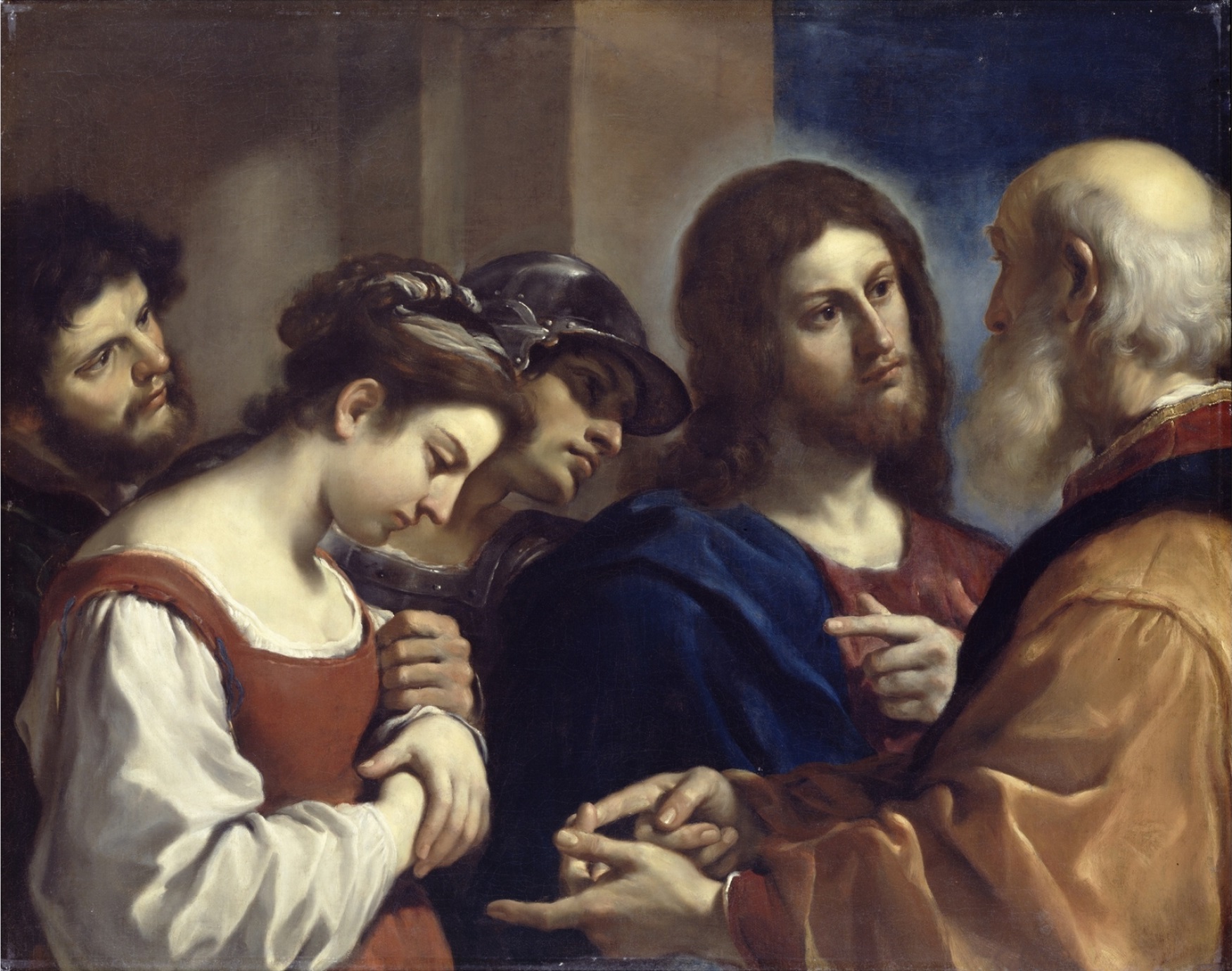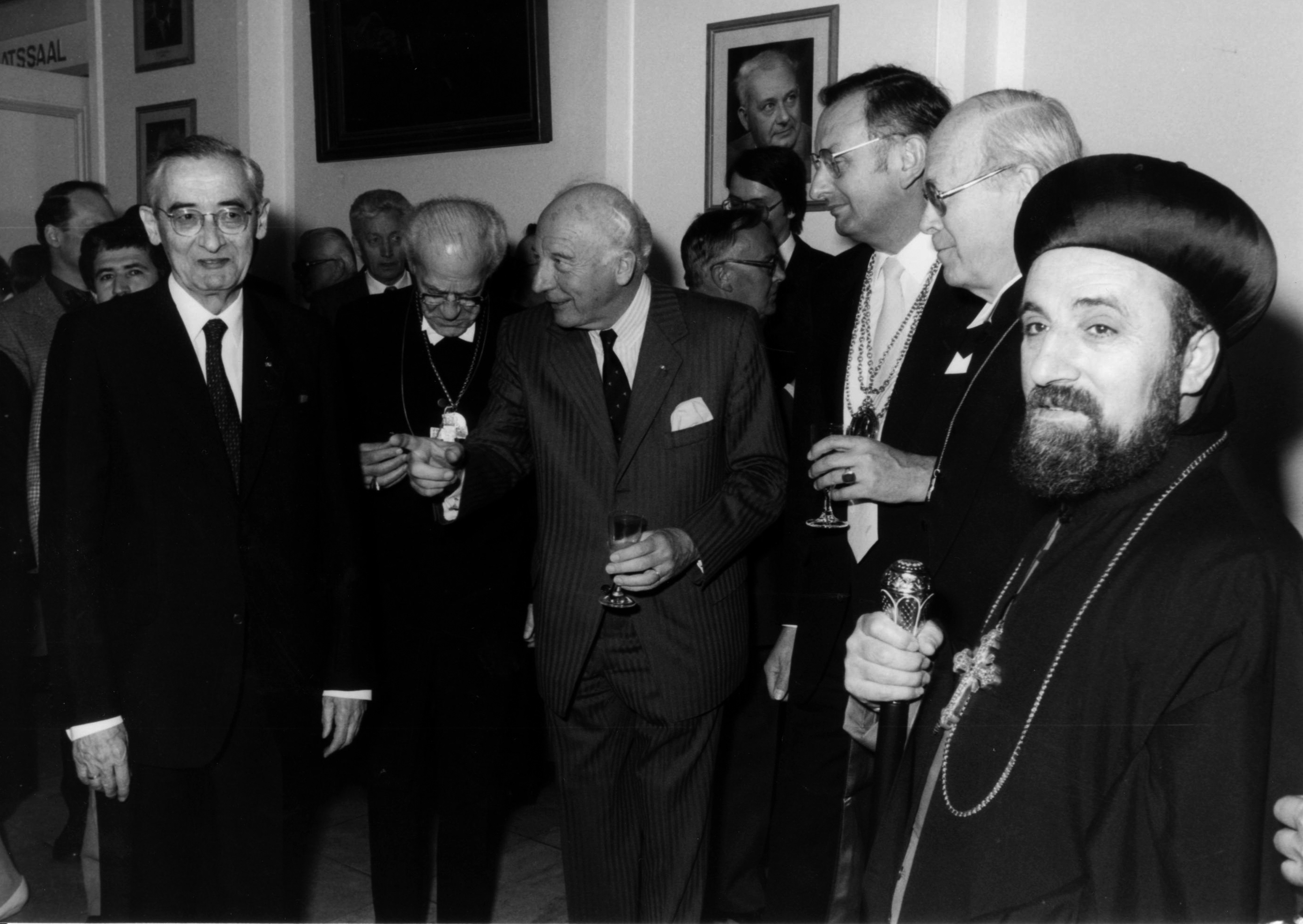|
Minuscule 259
Minuscule 259 (in the Gregory-Aland numbering), A122 ( Soden), is a Greek minuscule manuscript of the New Testament, on parchment. Paleographically it has been assigned to the 11th century.K. Aland, M. Welte, B. Köster, K. Junack, "Kurzgefasste Liste der griechischen Handschriften des Neues Testaments", ''Walter de Gruyter'', Berlin, New York 1994, p. 62. It has marginalia. Description The codex contains the text of the four Gospels on 263 parchment leaves (). The biblical text is surrounded by a catena. The text is divided according to the Ammonian Sections, whose numbers are given at the margin, with references to the Eusebian Canons (written below Ammonian Section numbers). It contains the Epistula ad Carpianum, Eusebian tables, Prolegomena, tables of the (''tables of contents''), Menologion, Synaxarion, and commentaries ( Victor's on Mark). Text The Greek text of the codex is a representative of the Byzantine text-type. Aland placed it in Category V. It was ... [...More Info...] [...Related Items...] OR: [Wikipedia] [Google] [Baidu] |
Gospel
Gospel originally meant the Christianity, Christian message ("the gospel"), but in the second century Anno domino, AD the term (, from which the English word originated as a calque) came to be used also for the books in which the message was reported. In this sense a gospel can be defined as a loose-knit, episodic narrative of the words and deeds of Jesus, culminating in trial of Jesus, his trial and crucifixion of Jesus, death, and concluding with various reports of his Post-resurrection appearances of Jesus, post-resurrection appearances. The Gospels are commonly seen as literature that is based on oral traditions, Christian preaching, and Old Testament exegesis with the consensus being that they are a variation of Greco-Roman biography; similar to other ancient works such as Xenophon's Memorabilia (Xenophon), ''Memoirs of Socrates''. They are meant to convince people that Jesus was a charismatic miracle-working holy man, providing examples for readers to emulate. As such ... [...More Info...] [...Related Items...] OR: [Wikipedia] [Google] [Baidu] |
Synaxarion
Synaxarion or Synexarion (plurals Synaxaria, Synexaria; , from συνάγειν, ''synagein'', "to bring together"; cf. etymology of '' synaxis'' and ''synagogue''; Latin: ''Synaxarium'', ''Synexarium''; ; Ge'ez: ሲናክሳሪየም(ስንክሳር); ) is the name given in the Eastern Orthodox, Oriental Orthodox and Eastern Catholic Churches to a compilation of hagiographies corresponding roughly to the martyrology of the Roman Church. There are two kinds of synaxaria: *Simple synaxaria: lists of the saints arranged in the order of their anniversaries, e.g. the calendar of Morcelli *Historical synaxaria: including biographical notices, e.g. the Menologion of Basil II and the synaxarium of Sirmond. The notices given in the historical synaxaria are summaries of those in the great menologies, or collections of lives of saints, for the twelve months of the year. As the lessons in the Byzantine Divine Office are mostly the lives of saints, the Synaxarion became the collectio ... [...More Info...] [...Related Items...] OR: [Wikipedia] [Google] [Baidu] |
Alexis Of Russia
Alexei Mikhailovich (, ; – ), also known as Alexis, was Tsar of all Russia from 1645 until his death in 1676. He was the second Russian tsar from the House of Romanov. He was the first tsar to sign laws on his own authority and his council passed the ''Sobornoye Ulozheniye'' of 1649, which strengthened the bonds between autocracy and the lower nobility. In religious matters, he sided closely with Patriarch Nikon of Moscow, Patriarch Nikon during the Schism of the Russian Church, schism in the Russian Orthodox Church which saw unpopular liturgical reforms. While finding success in foreign affairs, his reign saw several wars with Russo-Persian War (1651–1653), Iran, Russo-Polish War (1654–1667), Poland (from whom left-bank Ukraine and Smolensk Voivodeship, Smolensk were annexed) and Russo-Swedish War (1656–1658), Sweden, as well as internal instabilities such as the Salt Riot in Moscow and the Cossack revolt of Stenka Razin in southern Russia. At the time of his death, R ... [...More Info...] [...Related Items...] OR: [Wikipedia] [Google] [Baidu] |
Patriarch Nikon
Nikon (, ), born Nikita Minin (; 7 May 1605 – 17 August 1681) was the seventh Patriarch of Moscow and all Rus' of the Russian Orthodox Church, serving officially from 1652 to 1666. He was renowned for his eloquence, energy, piety and close ties to Tsar Alexis of Russia. Nikon introduced many reforms, including liturgical reforms that were unpopular among conservatives. These divisions eventually led to a lasting schism known as '' Raskol'' (schism) in the Russian Orthodox Church. For many years, he was a dominant political figure, often equaling or even overshadowing the Tsar. In December 1667, Nikon was tried by a synod of church officials, deprived of all his sacerdotal functions, and reduced to the status of a simple monk. Early life Son of a Mordvin peasant farmer named Mina, he was born on 7 May 1605 in the village of , 90 versts (96 km or 60 miles) from Nizhny Novgorod. His mother died soon after he was born, and his father remarried. His stepmother mistreated ... [...More Info...] [...Related Items...] OR: [Wikipedia] [Google] [Baidu] |
Mount Athos
Mount Athos (; ) is a mountain on the Athos peninsula in northeastern Greece directly on the Aegean Sea. It is an important center of Eastern Orthodoxy, Eastern Orthodox monasticism. The mountain and most of the Athos peninsula are governed as an Autonomous administrative division, autonomous region in Greece by the monastic community of Mount Athos, which is ecclesiastically under the direct jurisdiction of the Ecumenical Patriarchate of Constantinople, Ecumenical Patriarch of Constantinople. The remainder of the peninsula forms part of the Aristotelis (municipality), Aristotelis municipality. By Greek law and by religious tradition, women are prohibited from entering the area governed by the monastic community. Mount Athos has been inhabited since ancient times and is known for its long Christian presence and historical monastic traditions, which date back to at least 800 AD during the Byzantine Empire, Byzantine era. Because of its long history of religious importance, the ... [...More Info...] [...Related Items...] OR: [Wikipedia] [Google] [Baidu] |
Iviron Monastery
The Monastery of Iviron ( ka, ათონის ივერთა მონასტერი , tr; ) is an Eastern Orthodox monastery in the monastic community of Mount Athos in northern Greece Greece, officially the Hellenic Republic, is a country in Southeast Europe. Located on the southern tip of the Balkan peninsula, it shares land borders with Albania to the northwest, North Macedonia and Bulgaria to the north, and Turkey to th .... History The monastery was built under the supervision of two Georgian monks, John the Iberian and John Tornike between AD 980–83 and housed Georgian clergy and priests. It was founded on the site of the former Monastery of Clement. John the Iberian was appointed as the abbot of the newly founded monastery in 980. In 1005, Euthymius the Iberian became the secondary abbot of Iviron Monastery. In Greek, Iviron literally means "of the Iberians". The monastery ranks third in the Athonite hierarchy of 20 sovereign monasteries. Notab ... [...More Info...] [...Related Items...] OR: [Wikipedia] [Google] [Baidu] |
Minuscule 250
Minuscule 250 (in the Gregory-Aland numbering), O 10 ( Soden), is a Greek minuscule manuscript of the New Testament, on parchment. Paleographically it has been assigned to the 11th century.K. Aland, M. Welte, B. Köster, K. Junack, "Kurzgefasste Liste der griechischen Handschriften des Neues Testaments", ''Walter de Gruyter'', Berlin, New York 1994, p. 61. Scrivener labelled it by 264a, 337p. Gregory labelled it by 250a, 299p, and 121r. Description The codex contains the text of the Book of Acts, the Catholic epistles, the Pauline Epistles, and the Book of Revelation on 379 parchment leaves (). The biblical text is surrounded by a catena. The biblical text is written in one column per page and 20 lines in column, the text of commentary has 41 lines. The Epistle to the Hebrews is placed after Epistle to Philemon. It contains Synaxarion and the Euthalian Apparatus. Text The Greek text of the codex is a representative of the Byzantine text-type. Aland placed it in Cat ... [...More Info...] [...Related Items...] OR: [Wikipedia] [Google] [Baidu] |
Jesus And The Woman Taken In Adultery
Jesus and the woman taken in adultery (or the ) is a passage (pericope) found in John 7:53–John 8#Pericope adulterae, 8:11 of the New Testament. It is considered by many to be Pseudepigrapha, pseudepigraphical. In the passage, Jesus was teaching in the Second Temple after coming from the Mount of Olives. A group of scribes and Pharisees confronts Jesus, interrupting his teaching. They bring in a woman, accusing her of committing adultery, claiming she was caught in the very act. They tell Jesus that the punishment for someone like her should be stoning, as prescribed by Law of Moses, Mosaic Law. Jesus begins to write something on the ground using his finger; when the woman's accusers continue their challenge, he states that the one who is without sin is the one who should cast the first stone at her. The accusers depart, realizing not one of them is without sin either, leaving Jesus alone with the woman. Jesus asks the woman whether anyone has condemned her, and she answers ... [...More Info...] [...Related Items...] OR: [Wikipedia] [Google] [Baidu] |
Claremont Profile Method
The Claremont Profile Method is a method for classifying ancient manuscripts of the Bible. It was elaborated by Ernest Cadman Colwell and his students. Professor Frederik Wisse attempted to establish an accurate and rapid procedure for the classification of the manuscript evidence of any ancient text with large manuscript attestation, and to present an adequate basis for the selection of balanced representatives of the whole tradition. The work of Wisse is limited only to three chapters in Luke: 1, 10, and 20. Wisse's profiles The word before the bracket is the reading of the UBS edition. The profile of a manuscript is formed by noting the numbers of those test readings where the manuscript agrees with the bold reading. The readings which are not bold are those of the Textus Receptus. Luke 1 * Luke 1:2 (1 reading) — ] * Luke 1:7 (2 reading) — ην η ελισαβετ ] η ελισαβετ ην * Luke 1:7 (3 reading) — η ] omit * Luke 1:8 (4 reading) — ] ενα� ... [...More Info...] [...Related Items...] OR: [Wikipedia] [Google] [Baidu] |
William B
William is a masculine given name of Germanic origin. It became popular in England after the Norman conquest in 1066,All Things William"Meaning & Origin of the Name"/ref> and remained so throughout the Middle Ages and into the modern era. It is sometimes abbreviated "Wm." Shortened familiar versions in English include Will or Wil, Wills, Willy, Willie, Bill, Billie, and Billy. A common Irish form is Liam. Scottish diminutives include Wull, Willie or Wullie (as in Oor Wullie). Female forms include Willa, Willemina, Wilma and Wilhelmina. Etymology William is related to the German given name ''Wilhelm''. Both ultimately descend from Proto-Germanic ''*Wiljahelmaz'', with a direct cognate also in the Old Norse name ''Vilhjalmr'' and a West Germanic borrowing into Medieval Latin ''Willelmus''. The Proto-Germanic name is a compound of *''wiljô'' "will, wish, desire" and *''helmaz'' "helm, helmet".Hanks, Hardcastle and Hodges, ''Oxford Dictionary of First Names'', Oxfor ... [...More Info...] [...Related Items...] OR: [Wikipedia] [Google] [Baidu] |
Categories Of New Testament Manuscripts
New Testament manuscripts in Greek can be categorized into five theoretical groups, according to a schema introduced in 1981 by Kurt and Barbara Aland in ''The Text of the New Testament''. The categories are based on how each manuscript relates to the various theorized text-types. Generally speaking, earlier Alexandrian manuscripts are category I, while later Byzantine manuscripts are category V. Aland's method involved considering 1000 passages where the Byzantine text differs from non-Byzantine text. The Alands did not select their 1000 readings from all of the NT books; for example, none were drawn from Matthew and Luke. Description of categories The Alands' categories do not simply correspond to the text-types; all they do is demonstrate the 'Byzantine-ness' of a particular text; that is, how much it is similar to the Byzantine text-type, from least (Category I) to most similar (Category V). Category V can be equated with the Byzantine text-type, but the other categori ... [...More Info...] [...Related Items...] OR: [Wikipedia] [Google] [Baidu] |
Kurt Aland
Kurt Aland (28 March 1915 – 13 April 1994) was a German theologian and Biblical studies, biblical scholar who specialized in New Testament textual criticism. He founded the ''Institute for New Testament Textual Research, Institut für neutestamentliche Textforschung'' (Institute for New Testament Textual Research) in Münster and served as its first director from 1959 to 1983. He was one of the principal editors of ''Novum Testamentum Graece#Editions, Nestle–Aland – Novum Testamentum Graece'' for the Deutsche Bibelgesellschaft and ''Novum Testamentum Graece#Editions, The Greek New Testament'' for the United Bible Societies. Life Aland was born in Berlin-Steglitz. He started studying theology in 1933 at the Humboldt University of Berlin, Friedrich-Wilhelms-Universität in Berlin (he also studied philology, archaeology, and history). On 23 March that year, he was examined before the ''Bruderrat'' (council of brothers) in the ''Bekennende Kirche'' (Confessing Church). Durin ... [...More Info...] [...Related Items...] OR: [Wikipedia] [Google] [Baidu] |




